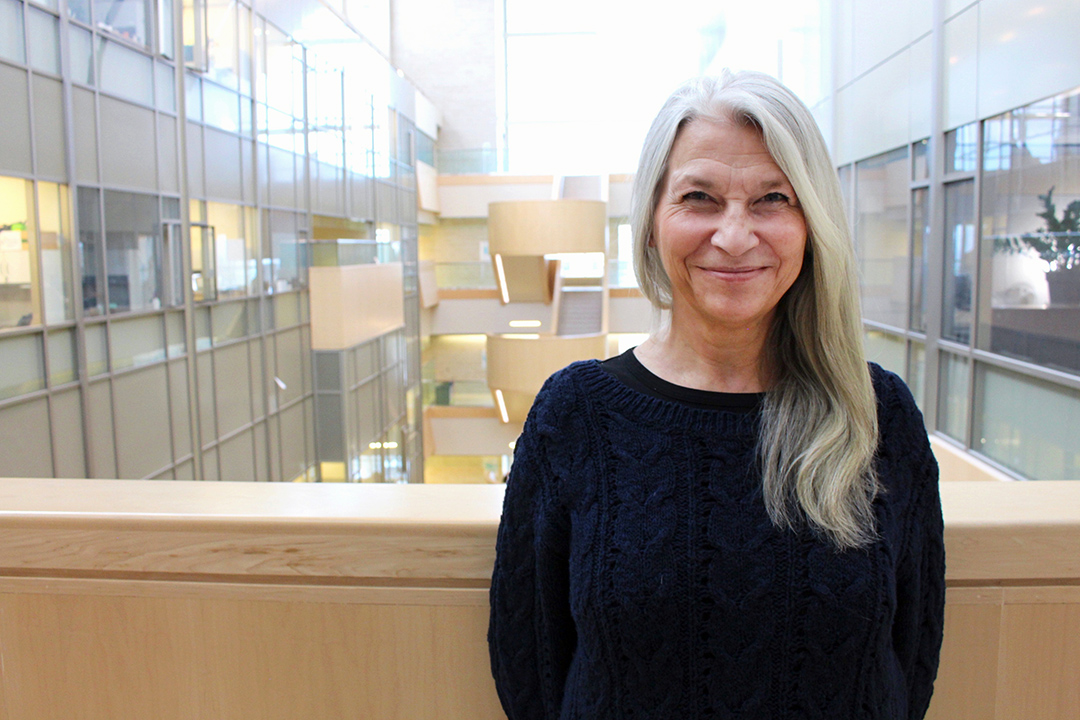
Health Sciences enhancing interprofessional training
A wave of collaboration is sweeping University of Saskatchewan (USask) Health Sciences, with an updated approach to InterProfessional-Based Learning (IPBL) sessions, giving students of all disciplines the opportunity to improve practical skills such as communication and teamwork.
By Naomi ZurevinskiAlthough IPBL sessions have previously been a staple of USask health science disciplines, Dr. Sheryl Mills (PhD), associate director, academic programs and interprofessional education, was brought on to the Health Sciences team in 2019 to improve interprofessional teaching and practice.
“Part of the Health Sciences’ focus is finding ways in which all of our colleges and programs can work together, and interprofessional education is one of those places,” Mills said. “It’s important because health-care teams are made up of professionals from all areas, depending on the needs of the patient, the pet, or the client.”
The format of the sessions has changed from students working in groups of eight to 11 with a tutor, to self-made groups of three to four in large rooms with a few facilitators. The sessions involve solving a case or completing a task and intentionally practicing the skills necessary for a high functioning team.
“The teamwork and skill development piece has included things like being present, truly listening, and working on how to speak up even though it’s awkward,” Mills said.
Additionally, an online platform and app called IPECT has been developed, to help students access session material, quizzes and resources and keep track of their skill development.
Ali Stobbe, a fourth-year student in the College of Pharmacy and Nutrition, helped develop the new session format. She said the change in group size allows students to build better relationships.
“Now that I’m in the field and interacting with others, I’m seeing first-hand how much everyone relies on each other,” Stobbe said. “Working together, problem solving and conflict resolution are hard to do, but if you can’t work with someone else, you’re not going to be good at your job, no matter what area you’re in.”
Mikayla Laube, a second-year student in the College of Medicine, was also involved in developing the sessions. She said groups are now pushed to take initiative.
“The new format fosters independence and role assignment within the groups, which better reflects a true interprofessional team,” she said. “The value of a team-based approach to health care is becoming more recognized, and every change in our curriculum that reflects this will contribute to the creation of high-functioning health-care professionals.”
Dr. Steven Jones (PhD), associate provost, health, said that strong interprofessional skills are a gateway to better patient outcomes.
“When everybody in health care sees themselves as part of a team and feels empowered to contribute, patients have better outcomes,” he said, adding that Health Sciences is excited to continue building more content into programs.
For Mills, the newly renovated Health Sciences Building and heightened approach to interprofessional education is a natural intersection to improve interdisciplinary teaching and research.
“Ultimately, the new building was created with the goal of increasing the health and wellness of our population,” she said. “Whether you’re solving a patient case, working with a pet, or solving a complex public health problem, the ability to work as a team member transcends all content matter. What we’re doing here is intentional work to create great team members.”
Article re-posted on .
View original article.
